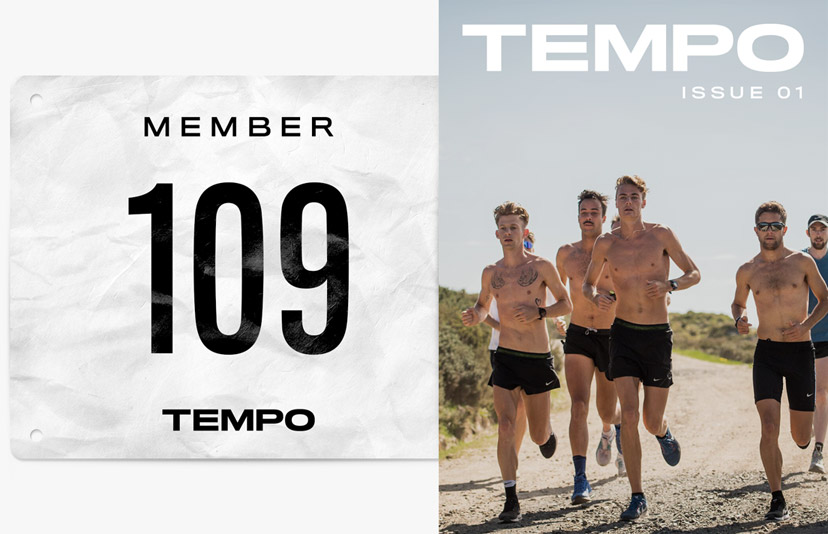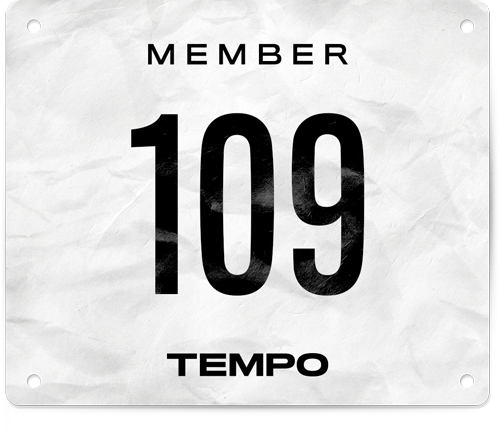Lifestyle
Get race ready with adidas
The new adizero range has everything you need
Editor's Note: This content is presented by adidas.
It’s good to have the stripes doing big things in the running game, isn’t it? Make no mistake, the start of the carbon era seemed to catch Herzo’s finest on the back foot, and as 2018 and 2019 rolled on a lot of us started to wonder if adidas were transitioning away from the race space - which would have been a crying shame. Adi were the gang for so long in marathoning, even as late as the ‘00’s when Haile Gebrselassie was crushing.
Anyway, all the speculation went quiet when the Adios Pro dropped in 2020 and became an instant record setter and podium favourite around the world (Peres Jepchirchir wearing them to a new world record, and then to a win in the World Half Marathon Championships in 2020, while Kibiwot Kandie broke the men’s world record in Valencia in December). The shoe was next to impossible to get, but hype is part of the game these days.
In 2021, adi gang have dialled it up to 11 - and we don’t just mean the stack (but they have pumped that right up - more on that shortly). The complete adizero range now rivals even the strongest quiver of training and racing products; offering something for everyone - and for those runners who take it to borderline obsessive levels, your whole rotation could feasibly now be made up of this adizero range.
I’ve been smashing about in the Boston 10 and the Adios Pro 2 for the last few weeks. I’ve put at least 150km into the Boston and 4 long workouts in the Adios Pro 2.
Beyond these two, the Adios 6 is your go-to training flat if you’re a traditionalist (and many are comparing it to the Boston 9 which was well loved), and the one that deserves more attention is the Prime X.
Why does it deserve more attention? 50mm stack height super shoe that could actually be a handy weapon in your training arsenal. Most people are looking at the Prime X and saying ‘it’s illegal to race in’ because of the stack height, but they’re ignoring the training benefits. Anything that allows you to train faster and recover better is ultimately a great training aid - if you have the cash.
For now though, let’s stick to the Boston 10 and the Adios Pro 2. I had the opportunity to fire some questions to Stephan Scholten, Category Director for the adizero line, so I’ll put some of his commentary in as well.
Let’s dive in.
Adizero Boston 10
Straight up before I start - if you’re one of those people looking for the comments section just so you can type 'but it’s nothing like the old Boston' - you gotta move on. We’re not hearing that anymore.
The Boston is the mileage monster, the shoe you can flog day in and day out. Kick them off your feet after your afternoon run, and they’ll be ready to go again the next morning. The most noticeable thing about these at first glance is obviously the stack - they’re sitting on a slab of Lightstrike PRO (adi’s good foam - it’s super light and cushy) and EVA (remember I said you could flog these? Thank the EVA for that). They actually look a little like a race shoe with all that stack - it’s a strong look and will lead to the perception of being a high end shoe.
Anyway, the stack height is a reported 39mm at the heel and 31mm at the toe, for an 8mm drop. Why put this much stack in a daily trainer? The goal (for most of us) with our easy miles is to get through them happy and healthy and in good shape to tackle the workouts that matter. So putting more foam in the Boston 10 means your legs should feel fresher and recover better, so you can rip that hard session you have tomorrow.
Jammed in that slab of Lightstrike PRO and EVA is another adidas innovation, Energyrods. On the race ready Adizero Pro these are carbon, but in the Boston they’re ‘glass fibre infused’. I’ll be honest - I don’t know what that means.
Energyrods serve a couple of purposes, just like carbon plates. Firstly, they’re designed to propel you forward - they’re obviously more responsive than midsole foam so they aid in energy return. Second, they actually add stability. As shoes go higher and higher in stack, something needs to be done to keep the runner stable.
I asked Stephan about the role of Energyrods in the Boston 10. “The glass-fibre infused ENERGYRODS in the ADIZERO BOSTON 10 offer a slightly less aggressive transition vs. PRO 2 but still bring the necessary stiffness to the midsole...The role of the ENERGYRODS across the entire collection is the same. They deliver lightweight stiffness and are designed for a more anatomical driven transition, limiting energy loss. In some of the models they are just tuned differently to suit the use case of the shoe.”
So - how does the Boston feel underfoot? I definitely got the responsive feel from them that a lot of daily trainers just don’t have. When I head out the door wearing the Boston I get the sense that it’s still up for a bit of fun stuff - if I wanna chase down that person ahead of me or take that quick break in traffic, I can. The Boston would work for long runs with a bit of spice in them too because it has the propulsion that most daily trainers lack.
It’s not a dead or dull sensation underfoot, which is a trap that a lot of daily trainers or recovery shoes can fall into. They’re so focused on being cushioned and saving your legs that they forget we still want to be up and running on top of the ground - not feeling like we’re sinking into it with each step. But it’s also worth calling out that this isn’t that soft, plush ride some people might want in a volume shoe either.
The shoe has settled underfoot with more wear - the first few runs it felt a little too firm, but after 50km they became my default pick anytime I’m heading out for easy miles.
The upper is a dual layer design - there’s an outer layer which is breathable and open, and appears similar to the upper on the Adios Pro 2 but also an inner layer which includes the gusseted tongue. One of the things I love about adidas is their uppers - the Adios Pro in 2020 had the sickest upper, and the Adios Pro 2 (which we’ll talk about shortly) improves it further.
Stephan sums up the adidas approach to the Boston 10 pretty well, “When thinking about the balance between weight, comfort, and durability, this shoe leans into comfort and durability and as a result is a little heavier – however because of its design it still feels dynamic. Which is exactly what you need to support every day long distance training runs.”
When would I wear the Boston? I’ve been using it 3-4 times per week for easy runs, midweek mid-long runs, and warm ups before sessions. You could long run in it, and it probably has enough pop to do tempo’s, but it is on the heavier side so factor that in.
Adizero Adios Pro 2
Oh baby. I loved the 2020 Adios Pro - the Energyrods were popping, the upper was my favourite upper of all the supershoes, they just felt a bit...too firm. I felt like they would be dynamite for a half marathon, but wondered about comfort over the full marathon distance. The Adios Pro 2 addresses the comfort issue for me, and improves pretty much everything.
I asked Stephan how the design team build a shoe like the Adios Pro 2 - do they focus purely on making the fastest shoe they can, or are they trying to ensure it’s balanced right through the process - getting that mix of speed and stability and comfort. “In the development process we look at three key areas for the ADIZERO ADIOS PRO 2: running economy, traction, and weight. It is a balancing act, and it is hard to get right. We go through multiple design phases where we test with our athletes, evaluate, and then refine to ensure we dial up or dial down the focus across those three areas.”
With that in mind, it’s my job to try and explain how a shoe performs, and how design or marketing speak translates into product characteristics for runners. So let’s start with the midsole.
It’s a sponge cake sized layer of Lightstrike PRO, with the carbon infused Energyrods laying the foundation for speed. For the nerds - I don’t have accurate stack height information, as the Internet seems to be debating whether it’s a 10mm drop or 8.5mm - regardless the back is sitting up around that 39mm mark (which we love). The actual shape of the midsole has been overhauled which I know people will appreciate - shout out to the people with wide feet who struggled with the OG version.
The feeling underfoot is fast. Think about the fastest super shoes you’ve worn, and this is right there with it. Of course, there’s no controlled testing on any of these shoes when it comes to what’s the fastest, but I’ve found the pace feels easy - I’ve even worn them on jogs and looked down at my watch after a few minutes and realised I’m sitting at marathon pace - I know that sounds horribly cliched, but if you were there with me you would be saying “it’s true, that did happen”. When you get rolling, they offer great momentum - which I assume is down to the Energyrods.
I won’t dwell on comparing super shoes but I will say this - they’re all good, but like choosing your fighter on Mortal Kombat, they all have slightly different characteristics to suit your preferences. Each brand seems to prioritise something - comfort, stability, speed, or something else. My quick take is that these win the speed category (side note - Raiden, every time).
The upper is chef’s kiss. Adi call it ‘Celermesh 2.0’ because of course they do. Whatever you want to call it, it’s elite. An ultra light and breathable polyester mesh, with the blue fabric sections for structure. The air flow is ridiculous - a couple of hours after running a hard session in these, the Celermesh is completely dry. The tongue however, which is still a thin and light tongue, is still damp - which doesn’t matter, because I’m not running twice a day in these, but it highlights the effectiveness of the Celermesh in promoting airflow and removing moisture.
The only thing to note in the upper is around the heel. These fall on the unstructured side of heel cups - structured or unstructured heels is like pulpy or pulp-free orange juice - there’s no right answer, it’s a matter of preference (except if you choose pulp-free, then you’re wrong). Jokes aside, the heel cup here is pretty unstructured - you would already know if unstructured heel cups bother you, so keep it in mind.
I put these on my Instagram a while ago and had a lot of questions, and it’s generally a good test for me - I want to keep my responses brief, for obvious reasons, so it forces me to speak off the top and get to the point. Instagram forces me to summarise my thoughts on a shoe in 2 sentences. My main response to people was “they’re f$%king fast. Maybe faster than anything else. Feel like stability could be an issue for people who are prone to losing their form badly when tired”.
That was after the first workout in them - I’ve since done a few more, and I feel better about the shoes each time I wear them. I think perhaps my initial stability questions were a first impression and not a lasting one, but I’ve left them in this review in the interests of transparency.
Other people asked me if I would race in it. I think if there were a half marathon tomorrow, I would 100% race in these. A marathon? Probably. I can’t say for sure because I’ve been wearing these for threshold workouts on the road rather than hard long runs, and I think you need to take a shoe to 2 hours on a run before you can confidently say it’s coming to the start line with you.
The Adizero range is available right now - check the range out at adidas online or through your local running store.


